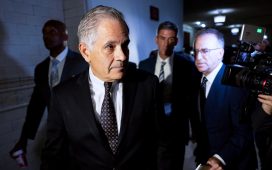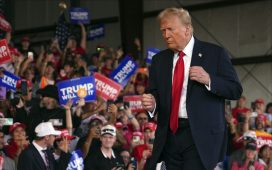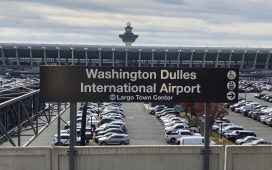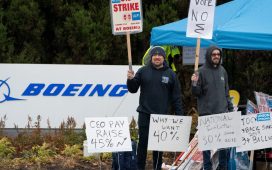For six decades, Boeing has been among the marquee names in human spaceflight.
The company helped build Nasa’s mighty Saturn V rockets that put man on the moon; it was a key contractor during the space shuttle era and international space station operations; and its engines are powering the agency’s next leap for the stars, the peerless Space Launch System.
So, a recent report in the Wall Street Journal that the troubled aerospace giant is exploring the sale of substantial chunks of its space enterprise following the debacle of its loss-making Starliner capsule raised a number of eyebrows among industry insiders.
Boeing announced last month its quarterly losses rose to almost $6bn amid a workers’ strike, and its new chief executive, Kelly Ortberg, suggested his priority would be fixing problems and mending bridges in the company’s core business of manufacturing aircraft.
“We’re better off doing less and doing it better, than doing more and not doing it well,” he told analysts on a recent earnings call.
There is no suggestion that Boeing intends to divest itself entirely from space, or that the company’s introspection will ultimately lead to the sale of its defense, space and security division or any part of it.
“Boeing doesn’t comment on market rumors or speculation,” a spokesperson told the Guardian in a statement.
But that a company inextricably linked to every major US achievement in space since the 1960s is even considering stepping back from ventures that helped make its name confirms deep-seated issues within Boeing, experts say.
“Boeing has always had a great sense of pride from being involved in the space industry, and something that the public looked on as an example of the company’s technical prowess and capability, so it’s definitely surprising from that perspective,” said Dr Donald Platt, professor of aerospace, physics and space sciences at Florida Tech, and director of the university’s Spaceport education center.
“But if you look at the problems they’re facing now, and the problems Starliner has created for them … nobody knows for sure how much money they’ve had to dump into Starliner to even get to the point they’re at now, so it’s a really big problem Boeing is looking at right now from the space point of view.”
Boeing announced in September that Ted Colbert, head of its space division, was leaving the company as Ortberg began “clean up” efforts.
Yet beyond image and prestige, Platt said, the turmoil at Boeing and uncertainty over when, or even if, Starliner will fly again, poses a number of serious questions for Nasa, particularly over the future of near-Earth crewed spaceflight.
Starliner was intended to be operational by now as an alternative to SpaceX’s Dragon capsule for ferrying astronauts to the space station. Technical issues forced its return to Earth in September without Butch Wilmore and Suni Williams, the astronauts who piloted its maiden crewed flight.
Nasa said last month it was awarding next year’s two scheduled crew rotation flights to SpaceX.
Bill Nelson, the Nasa administrator, replied “100%” when he was asked at a press conference in August if Starliner would fly again with a crew. Though Platt said he does not share that confidence, “especially when we look at the fact that we’re quickly going to have a new administration, whether it’s either a Democratic or a Republican presidential administration, that’s going to be a new set of people running Nasa.”
“They could make decisions that are not tied at all to what Bill Nelson has to say right now, honestly,” he added.
Officially, Nasa’s position is that it is “keeping options on the table” regarding Starliner. Notably, the agency has invested more than $5bn in the project since 2014, and the growing speculation that Boeing could be ready to walk away, with $1.85bn losses of its own, is likely to only worsen seemingly existent friction between the space agency and its commercial partner. That tension became increasingly evident after the test flight failure.
Even if Boeing decides it does want to separate from Starliner and its space station operations, it might not be able to find a buyer, other analysts say.
“From what we’ve heard, it’s a very surgical approach to what Boeing would be interested in selling from their space business, and whether or not that is achievable is an important question,” said Clayton Swope, deputy director of the Aerospace Security Project and a senior fellow in the International Security Program at the Center for Strategic and International Studies.
“Another question is who would be interested in buying that very sliver of the business that it’s not clear Boeing thinks they can make a profit on. It seems like a very unattractive part of the space business and causes you to question who would see potential or value there, and want to make that deal.”
Swope said some of Boeing’s troubles in its space division could be attributable to how the new business of commercial spaceflight is conducted: Nasa pays operators fixed price and term contracts instead of the mostly open-ended and more fluid partnerships of the Apollo era and beyond.
“A potential lesson from Starliner and the Boeing experiences here is how do companies that have typically done business with Nasa and the US government pivot to where the agency and a lot of the government wants to do space now, which is as a service?” he said.
“Where Nasa is paying for transportation services to the moon, to the space station, for astronauts, for cargo, it’s a fixed price arrangement and not a typical one that Boeing or another big government contractor would be comfortable with.
“That pivot is playing out right now and may have something to do with the Starliner and the Boeing story.”





